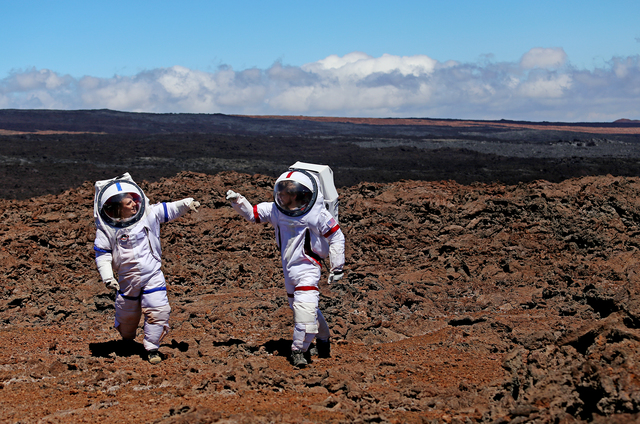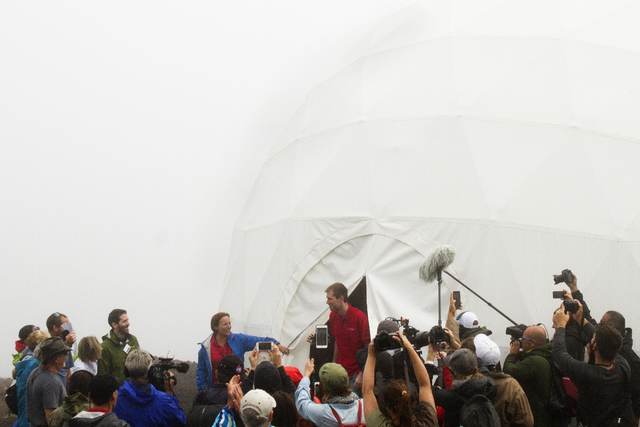Soon they will be Martians no more. ADVERTISING Soon they will be Martians no more. The latest participants in a Mars simulation study on Mauna Loa will end eight months of isolation Sunday as they venture out of their small
Soon they will be Martians no more.
The latest participants in a Mars simulation study on Mauna Loa will end eight months of isolation Sunday as they venture out of their small dome for the first time without donning spacesuits.
The four men and two women entered their 1,200-square-foot vinyl-covered shelter Jan. 19, separated from family, friends and the rest of the world, for that matter. To make the isolation all that more authentic, communications to and from the crew were placed on a 20-minute delay, the same time delay as if they were on Mars.
“It’s a really good crew. They’ve gotten through it pretty well as far as we can tell, though new things come out in debrief,” said Kim Binsted, principal investigator for Hawaii Space Exploration Analog and Simulation, overseen by the University of Hawaii at Manoa.
The NASA-funded simulation, on the flank of Mauna Loa overlooking Saddle Road and Mauna Kea, is the fifth conducted by HI-SEAS. Others lasted from four months to a year, with focuses on group cohesion to more basic needs such as crafting palatable meals from limited ingredients.
While simulations can shift slightly in focus, each is meant to study psychological challenges associated with extended isolation. A real mission to Mars would take about 2.5 years, said Binsted, a UH science professor.
“What we’re trying to find out is how do you pick people with all of the necessary skill sets they are going to need on these long-duration missions,” she said. That includes personalities and behavior.
“I would say things like diversity of backgrounds and skills and personalty types is a virtue rather than a problem,” Binsted said. “One thing we’ve seen over and over again on these missions, no matter how good of a crew, there is going to be conflict. How they respond to conflict, their resilience, is what really matters.”
She said problems begin to arise after about six months in isolation, which is why HI-SEAS finds eight-month simulations to be just right.
“When you want to do science, you want to repeat things,” Binsted said. “That’s the balance.”
Email Tom Callis at tcallis@hawaiitribune-herald.com.




